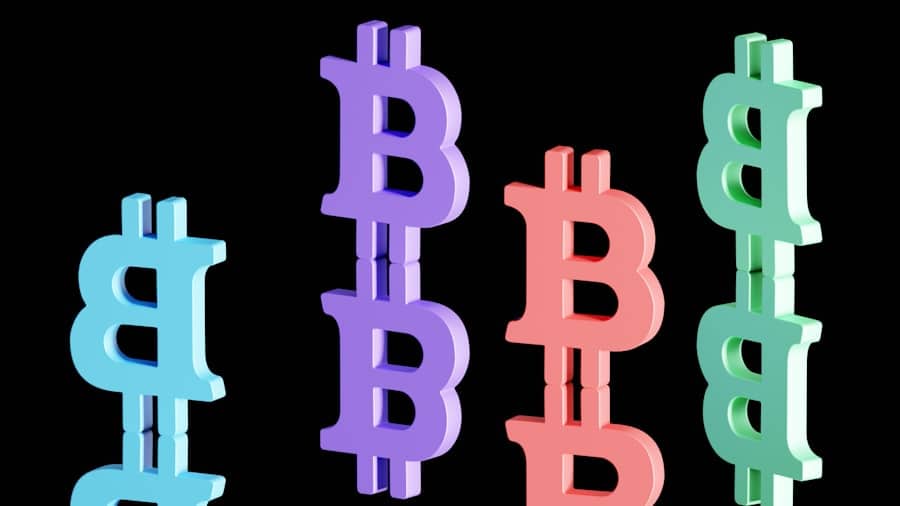Blockchain wallets serve as the digital interface through which users can interact with various cryptocurrencies and blockchain networks. Unlike traditional wallets that hold physical currency, blockchain wallets do not store money in a tangible form. Instead, they store the cryptographic keys that allow users to access their digital assets on the blockchain.
These keys are essential for sending and receiving cryptocurrencies, as they provide the necessary credentials to authorize transactions. The wallet itself can be thought of as a software application or a hardware device that facilitates this interaction, enabling users to manage their digital currencies securely. The concept of a blockchain wallet is rooted in the decentralized nature of blockchain technology.
Each transaction made on a blockchain is recorded on a public ledger, which is accessible to all participants in the network. This transparency is one of the key features of blockchain technology, but it also necessitates a secure method for users to manage their private keys. Without a proper understanding of how these wallets function, users may inadvertently expose themselves to risks such as theft or loss of funds.
Therefore, grasping the fundamental principles behind blockchain wallets is crucial for anyone looking to engage with cryptocurrencies.
Key Takeaways
- Understanding Blockchain Wallets:
- A blockchain wallet is a digital wallet that allows users to securely store and manage their cryptocurrencies.
- It provides a way to interact with the blockchain network and perform transactions.
- Types of Blockchain Wallets:
- There are different types of blockchain wallets, including hardware wallets, software wallets, and paper wallets.
- Each type has its own unique features and security considerations.
- Setting Up a Blockchain Wallet:
- Setting up a blockchain wallet involves choosing a wallet type, creating a strong password, and generating a unique wallet address.
- Users should follow the specific instructions provided by the wallet provider to complete the setup process.
- Securing Your Blockchain Wallet:
- Securing a blockchain wallet involves using strong authentication methods, keeping software up to date, and being cautious of phishing attempts.
- Users should also consider using multi-signature wallets for added security.
- Importance of Private Keys:
- Private keys are essential for accessing and controlling the funds in a blockchain wallet.
- It is crucial to keep private keys secure and never share them with anyone.
- Best Practices for Blockchain Wallet Security:
- Best practices for blockchain wallet security include using strong passwords, enabling two-factor authentication, and regularly backing up wallet data.
- Users should also be mindful of the websites and applications they use to access their wallets.
- Backing Up Your Blockchain Wallet:
- Backing up a blockchain wallet is important to prevent loss of funds in case of device failure or loss.
- Users should follow the backup instructions provided by their wallet provider and store backup copies in secure locations.
- Additional Security Measures for Blockchain Wallets:
- Additional security measures for blockchain wallets include using encrypted communication channels, avoiding public Wi-Fi for wallet access, and considering cold storage options for long-term storage of funds.
Types of Blockchain Wallets
Blockchain wallets can be broadly categorized into two main types: hot wallets and cold wallets. Hot wallets are connected to the internet and are typically more user-friendly, making them ideal for everyday transactions. Examples of hot wallets include mobile apps, web-based wallets, and desktop applications.
These wallets allow users to quickly send and receive cryptocurrencies, making them suitable for those who frequently trade or use digital currencies for purchases. However, their constant connection to the internet also makes them more vulnerable to hacking and cyberattacks. On the other hand, cold wallets are offline storage solutions that provide enhanced security for long-term asset holding.
Cold wallets include hardware wallets and paper wallets. Hardware wallets are physical devices that securely store private keys offline, while paper wallets involve printing out the keys on a piece of paper. By keeping these keys disconnected from the internet, cold wallets significantly reduce the risk of unauthorized access.
While they may not be as convenient for frequent transactions, they are often recommended for users who wish to safeguard their assets against potential online threats.
Setting Up a Blockchain Wallet

Setting up a blockchain wallet is a straightforward process, but it requires careful attention to detail to ensure security and functionality. The first step is to choose the type of wallet that best suits your needs—whether it be a hot wallet for daily transactions or a cold wallet for long-term storage. Once you have made your choice, you can proceed to download the wallet software or purchase a hardware wallet.
For software wallets, it is essential to download from reputable sources to avoid malware or phishing attacks. After installation, users typically need to create an account or set up the wallet by generating a new address. This process often involves creating a strong password and may include additional security measures such as two-factor authentication (2FA).
During this setup phase, users will also be prompted to back up their wallet by writing down a recovery phrase or seed phrase—a series of words that can be used to restore access to the wallet in case of loss or theft. It is crucial to store this recovery phrase securely, as anyone with access to it can gain control over the associated funds.
Securing Your Blockchain Wallet
Securing your blockchain wallet is paramount in protecting your digital assets from theft and unauthorized access. One of the first steps in securing your wallet is to enable two-factor authentication (2FA) if available. This adds an extra layer of security by requiring not only your password but also a second form of verification, such as a code sent to your mobile device.
This means that even if someone manages to obtain your password, they would still need access to your second factor to gain entry into your wallet. In addition to 2FA, regularly updating your wallet software is essential for maintaining security. Developers frequently release updates that patch vulnerabilities and enhance features.
By keeping your software up-to-date, you reduce the risk of exploitation by malicious actors who may take advantage of outdated systems. Furthermore, it is advisable to use strong, unique passwords for your wallet and any associated accounts. Password managers can assist in generating and storing complex passwords securely, minimizing the likelihood of password-related breaches.
Importance of Private Keys
Private keys are at the heart of blockchain wallet security; they are cryptographic keys that allow users to sign transactions and prove ownership of their digital assets. Each wallet generates a unique pair of keys: a public key, which can be shared with others to receive funds, and a private key, which must be kept confidential at all costs.
The importance of safeguarding private keys cannot be overstated. Unlike traditional banking systems where recovery options exist for lost passwords or compromised accounts, losing access to your private key often means losing access to your funds permanently. This irreversible nature of cryptocurrency transactions highlights the need for robust security practices surrounding private key management.
Users should consider using hardware wallets or secure storage solutions that keep private keys offline and away from potential threats.
Best Practices for Blockchain Wallet Security

Implementing best practices for blockchain wallet security is essential for minimizing risks associated with digital asset management. One fundamental practice is to avoid sharing sensitive information related to your wallet with anyone, including friends or family members. Scammers often employ social engineering tactics to trick individuals into revealing their private keys or recovery phrases.
Educating yourself about common scams and phishing attempts can help you recognize potential threats before they materialize. Another best practice involves diversifying your storage methods. Instead of keeping all your assets in one wallet, consider spreading them across multiple wallets—some hot and some cold—to mitigate risk.
This way, even if one wallet is compromised, you will not lose all your funds at once. Additionally, regularly reviewing transaction history and account activity can help you spot any unauthorized transactions early on, allowing you to take action before significant losses occur.
Backing Up Your Blockchain Wallet
Backing up your blockchain wallet is a critical step in ensuring that you do not lose access to your funds due to device failure or accidental deletion.
It is vital to write this phrase down and store it in a secure location—preferably offline—to prevent unauthorized access.
In addition to backing up the recovery phrase, users should also consider creating periodic backups of their wallet data if applicable. This may involve exporting wallet files or taking snapshots of the wallet’s state at regular intervals. However, it is essential to ensure that these backups are stored securely and encrypted if possible, as they may contain sensitive information that could be exploited if accessed by malicious actors.
Additional Security Measures for Blockchain Wallets
Beyond basic security practices, there are several additional measures users can take to enhance the security of their blockchain wallets further. One effective strategy is using multi-signature wallets (multisig), which require multiple private keys to authorize a transaction. This means that even if one key is compromised, an attacker would still need access to additional keys before they could execute any transactions.
Another advanced security measure involves utilizing hardware security modules (HSMs) or secure enclaves when managing private keys. These specialized devices provide an isolated environment for key management and transaction signing, significantly reducing exposure to online threats. Additionally, employing VPNs when accessing wallets over public networks can help protect against eavesdropping and man-in-the-middle attacks.
In conclusion, understanding blockchain wallets and implementing robust security measures are essential steps for anyone looking to engage with cryptocurrencies safely. By familiarizing yourself with different types of wallets, setting them up correctly, securing private keys, and following best practices for security and backup, you can significantly reduce the risks associated with managing digital assets in an increasingly complex landscape.
For those who are new to the world of blockchain and are looking to enhance their understanding of digital security, the “Beginner’s Guide to Blockchain Wallets and Security” is an excellent starting point. To further expand your knowledge on technology that can complement your digital lifestyle, you might find it beneficial to explore related tech gadgets. For instance, the article on Smartwatches: Fossil Review 2023 provides insights into the latest advancements in wearable technology, which can be an integral part of managing your digital assets securely on the go.
FAQs
What is a blockchain wallet?
A blockchain wallet is a digital wallet that allows users to securely store and manage their cryptocurrencies. It also enables users to send and receive digital currencies on the blockchain network.
How does a blockchain wallet work?
A blockchain wallet works by storing a user’s private and public keys, which are used to access and manage their cryptocurrency holdings. When a user wants to send or receive digital currencies, the transaction is recorded on the blockchain network and verified by network participants.
What are the different types of blockchain wallets?
There are several types of blockchain wallets, including software wallets (desktop, mobile, and online), hardware wallets, and paper wallets. Each type offers different levels of security and accessibility.
How can I secure my blockchain wallet?
To secure a blockchain wallet, users should enable two-factor authentication, use strong and unique passwords, keep their private keys offline, and regularly update their wallet software. It’s also important to be cautious of phishing attempts and only use reputable wallet providers.
What are the risks associated with blockchain wallets?
The main risks associated with blockchain wallets include hacking, phishing attacks, and loss of access to the wallet due to forgotten passwords or lost private keys. Users should take precautions to mitigate these risks and ensure the security of their digital assets.

